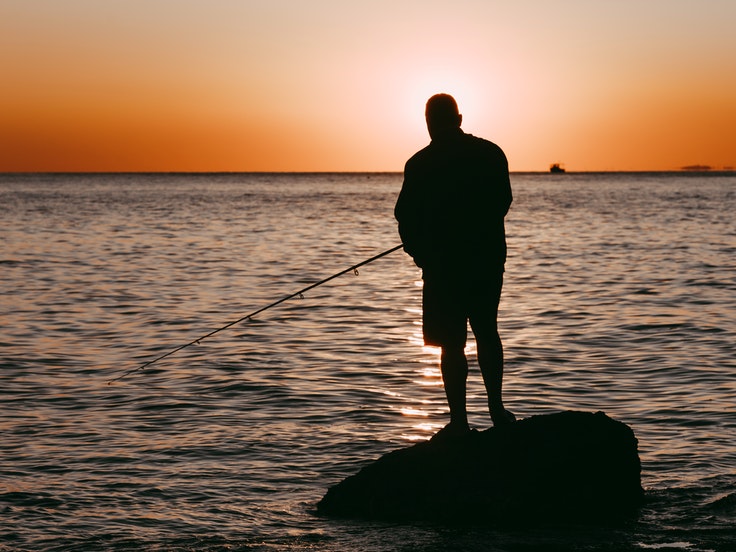
Shore fishing is a common practice in France. As a large part of our territory is bordered by the waters between the seas and oceans, there are many alternatives to boat fishing for stretching your line and catching a variety of fish species thanks to our wide range of sea fishing tackle.
Surfcasting remains one of the most popular techniques. It involves casting bait from a greater or lesser distance to predators that come within a few dozen metres of the shore. You can use worms, pieces of cuttlefish or even crabs and prawns. The rig and hook will play a big part in the success of your fishing day.
Casting with lures is also a popular technique. It gives anglers great mobility, allowing them to move towards the fish in search of them. With an intermediate rod and reel, you can fish for hours without tiring in search of bass in a wide range of waters. You'll easily be able to get through the rocks to flush out the fish.
You can also turn to other techniques. There are many of them and they are often taught with a few tips from the old hands. These include the water bubble technique, which allows you to cast a long way, even into the wind, and the eging technique, which targets cephalopods such as cuttlefish and squid rather than wolffish.
Surfcasting
You'll see them if you regularly walk along the water's edge. Surfcasters always have large rods on poles, slightly bent over with the tip constantly moving, especially when the swell is high. The line is taut and the angler regularly observes the tip, which acts as a touch detector.
The aim of this technique is to be able to cast natural bait as far as possible most of the time. To do this, you'll need to be equipped with long rods and a reel with a spool capable of pulling out line quickly. Weights and a careful rig will be needed to give you the maximum chance of attracting predators. There are many possibilities, which can vary greatly depending on the fish.
You can use pieces of cuttlefish, prawns, worms or sardines. Some anglers in rocky areas also use crabs with great success. The positioning of the hook on your bait will play an important part, and a few tips are in order before you start.
You'll be targeting a wide variety of fish. From turbot to sea bass, not forgetting all the sparids, meagre and more colourful fish in exotic destinations, you'll be opening up a whole host of possibilities if you have the patience. You'll need to learn to read the sea or ocean and understand how your prey moves with the currents and the different tidal swings.
Casting back
This is the most popular technique in recent years. The democratisation of lure fishing and the various models on offer have led to a major boom, demystifying the technical mastery aspect. So you don't need a boat to catch wolffish, just the right equipment for the job.
You can practice it in harbours, near dykes or other human creations. This is rockfishing, which will catch many kinds of small fish, but will also catch the more noble predators.
You can, of course, practice from the rocks. With casts of a few dozen metres, you'll be able to animate both hard bait with a measured swimming depth and soft lures with weight heads that are a little light. You can even have fun with casting jigs and their formidable efficiency. This will be especially true when you need to reach long casting distances, often to get through a series of waves.
Then there are the techniques for tackling rough water or fairly strong winds. Armed with long rods, you'll try to cast a buldo as far as possible with your lure or bait. The density of the design will allow you to pierce the air without being slowed down. And its buoyancy and density mean that you'll be able to pull off animations at all speeds while still having contact with the lure and detecting a touch.
Other possible techniques
In the end, there are quite a few. This is linked to the local traditions that still survive today, but also to the specific characteristics of certain sectors in very particular environments.
Rigging is certainly one of the most widely used techniques. A tended line with bait or various imitations, it makes for an activity that is not very tiring and that proves to be very effective. You can use both bait and feathered lines. You can practice on a fixed station or use a natural drift.
Supported fishing is also possible from dykes or quays. The presence of a deep enough bottom means that you can hope to hit some nice-sized fish of various species and enjoy regular surprises on your touchdown.
You can also take an interest in the upper part of the water column. This is called a floating line and imitates the drift of a drifting fish or prey. You can use different rigs and make the most of your ability to read the current to get your hooks far enough out.
Finally, to discover the richness of the foreshore, there's nothing like a few hours fishing on foot, with your boots tied to your ankles. It's a great opportunity to show your children that you can fish in the sea as well as in the countryside. These few hours will surely be a memorable time of sharing and telling stories.
Our other articles on sea fishing:
